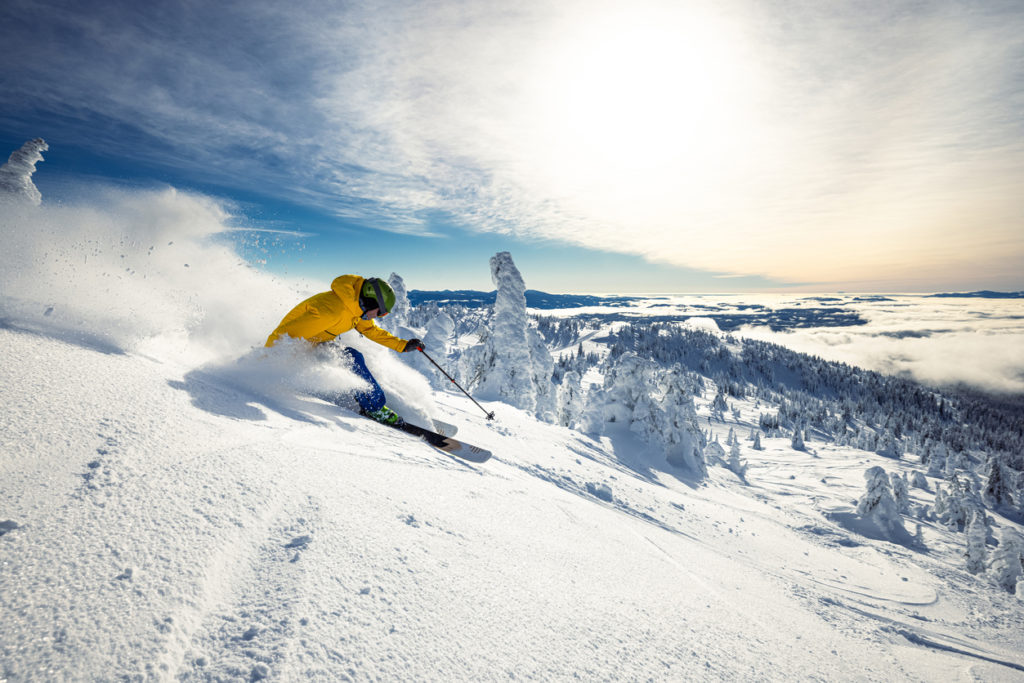Cross country skiing vs downhill skiing
When it comes to winter sports, skiing is often at the top of the list. However, not all skiing is created equal. Two of the most popular forms are cross country skiing and downhill skiing. Each offers unique experiences, benefits, and challenges. In this blog post, we will delve into the differences between these two types of skiing, helping you decide which might be the best fit for your next adventure in Lapland.
Introduction to Cross Country Skiing and Downhill Skiing
Cross country skiing, also known as Nordic skiing, involves traversing large expanses of snow-covered terrain using your own locomotion. This type of skiing is often done on relatively flat or gently rolling landscapes, making it a great way to explore the natural beauty of areas like Saariselkä in Finnish Lapland. Cross country skiing can be divided into two main styles: classic and skate skiing. Classic skiing involves a straight-ahead motion, while skate skiing mimics the movements of ice skating.
Downhill skiing, on the other hand, is all about the thrill of descending slopes at high speeds. This type of skiing is typically done at ski resorts, where lifts carry skiers to the top of the slopes. Downhill skiing requires a different set of skills and equipment compared to cross country skiing, and it offers a more adrenaline-pumping experience. In Saariselkä, you can find a variety of slopes suitable for all skill levels, from beginners to advanced skiers.
Benefits and Challenges of Cross Country Skiing
Cross country skiing offers numerous benefits, both physical and mental. It is an excellent cardiovascular workout that engages multiple muscle groups, including the legs, arms, and core. This low-impact exercise is also easier on the joints compared to other high-intensity sports. Additionally, cross country skiing allows you to immerse yourself in the serene beauty of nature, providing a peaceful and meditative experience.
However, cross country skiing also comes with its challenges. It requires a good level of physical fitness and endurance, as you will be propelling yourself over long distances. Navigating through varied terrain and changing weather conditions can also be demanding. Proper orienteering skills and knowledge of the environment are essential, especially in remote areas like the fells of Saariselkä.
Benefits and Challenges of Downhill Skiing
Downhill skiing is known for its exhilarating speed and the rush of adrenaline it provides. It is a fantastic way to improve balance, coordination, and agility. The sport also offers a social aspect, as ski resorts are often bustling with activity and provide opportunities to meet fellow skiing enthusiasts. In Saariselkä, the well-maintained slopes and modern facilities make downhill skiing a highly enjoyable experience.
On the flip side, downhill skiing can be physically demanding and requires a certain level of skill to navigate steep slopes safely. The risk of injury is higher compared to cross country skiing, making it crucial to follow safety guidelines and use proper equipment. Additionally, downhill skiing can be more expensive due to the cost of lift passes, equipment rental, and resort fees.
Equipment and Gear for Both Skiing Types
The equipment for cross country skiing and downhill skiing differs significantly. For cross country skiing, you will need lightweight skis, poles, and boots designed for either classic or skate skiing. The skis are generally longer and narrower than downhill skis, and the boots are more flexible to allow for a greater range of motion.
Downhill skiing requires sturdier equipment, including shorter and wider skis, rigid boots, and poles. Helmets are highly recommended for safety, and additional gear such as goggles, gloves, and layered clothing is essential to protect against the cold and wind. In Saariselkä, you can easily rent all the necessary equipment and even hire expert guides to help you get started.
Common Questions and Answers
Q: Which type of skiing is easier for beginners?
A: Both types have their learning curves, but many find cross country skiing easier to start with due to its lower speed and less steep terrain.
Q: Can I do both types of skiing in Saariselkä?
A: Absolutely! Saariselkä offers excellent facilities for both cross country and downhill skiing, making it a perfect destination for winter sports enthusiasts.
Q: What should I wear for skiing in Lapland?
A: Layered clothing is key. Start with moisture-wicking base layers, add insulating layers, and finish with a waterproof and windproof outer layer. Don’t forget gloves, a hat, and a neck gaiter.
Safety Tips and Precautions
Safety should always be a priority when engaging in any winter sport. For cross country skiing, ensure you have a map and a good understanding of the terrain. Always check the weather forecast before heading out and carry essential supplies such as water, snacks, and a first-aid kit.
For downhill skiing, wearing a helmet is crucial. Familiarise yourself with the slope rules and always ski within your ability level. Pay attention to signage and be mindful of other skiers, especially in crowded areas. In case of an accident, know how to contact ski patrol or resort staff for assistance.
At VALO Finland, we aim to provide a seamless and memorable experience for our guests. Whether you’re interested in cross country skiing or downhill skiing, our luxury villas in Saariselkä offer the perfect base for your winter adventure. From equipment rental to expert guides, we are here to meet your needs and ensure you have an unforgettable stay in Lapland.
Ready to explore the magic of Lapland? Book your stay at VALO Ice Cube Villas and let us help you create the winter holiday of your dreams.
